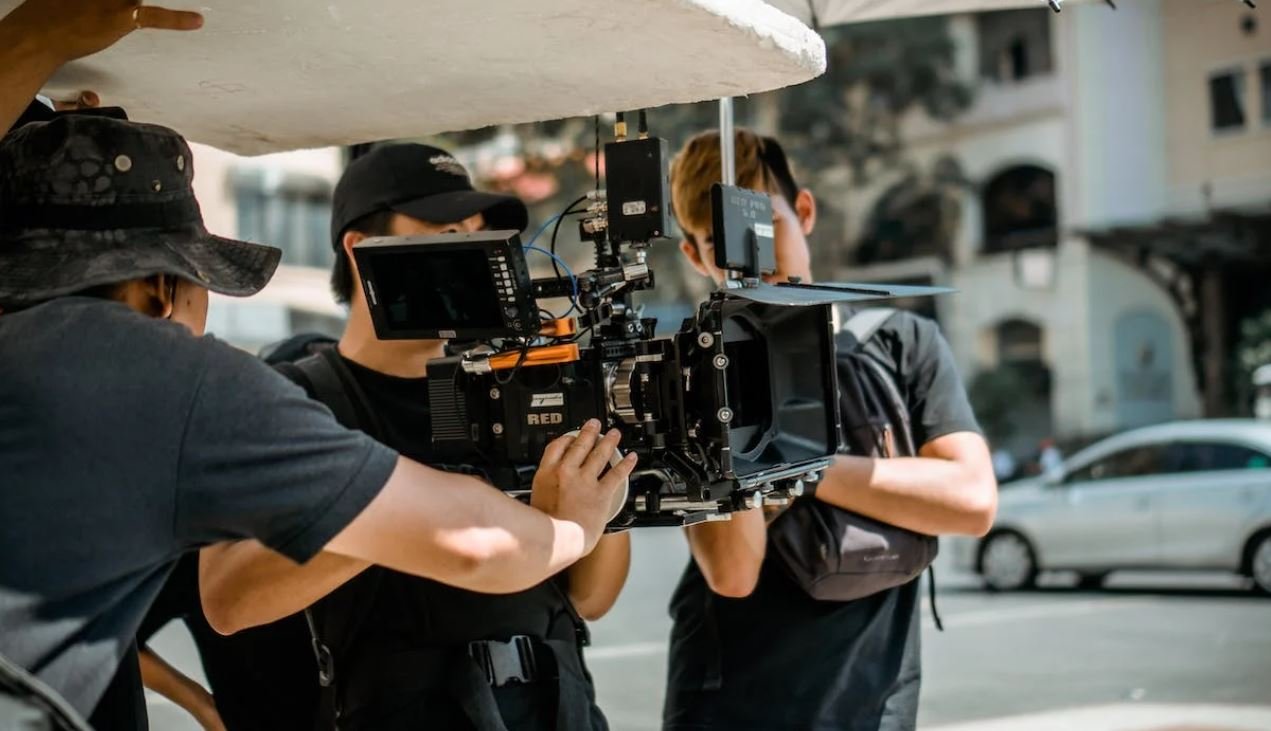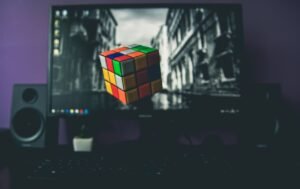Open Source AI Photo Generator
Artificial Intelligence (AI) continues to push the boundaries of what machines can accomplish. One of the exciting areas where AI is making significant progress is in generating realistic photos. With the advent of open source AI photo generators, creators and developers now have access to powerful tools that can create stunning images with just a few lines of code.
Key Takeaways
- Open source AI photo generators offer powerful image generation capabilities.
- These tools are accessible to creators and developers without extensive AI expertise.
- Generating realistic images requires training on large datasets.
- Application areas for AI photo generators include art, design, and content creation.
- Open source AI photo generators allow customization and experimentation.
Open source AI photo generators leverage the power of machine learning algorithms, particularly generative adversarial networks (GANs). GANs consist of two components: a generator and a discriminator. The generator creates images from random noise, while the discriminator tries to distinguish between real and fake images. Through an iterative process, these components improve, resulting in the generation of increasingly realistic photos. The process known as deep learning enables the models to learn from large datasets, allowing them to capture intricate details and styles.
*Interestingly, the GAN architecture was first introduced in 2014 by Ian Goodfellow and his colleagues.
Utilizing Open Source AI Photo Generators
With open source AI photo generators, creators can tap into cutting-edge technology without the need for extensive AI expertise. These tools provide pre-trained models that are ready to generate stunning images in various styles. Developers can integrate these models into their applications through APIs or use them directly in their code. By making source code freely available, experimentation, customization, and community collaboration are encouraged, driving rapid progress in the field of AI.
Training Datasets and Realism
Generating realistic images requires training the AI models on large datasets. These datasets consist of thousands or even millions of real images, allowing the models to learn intricate details, textures, and visual patterns. By feeding the model a significant amount of diverse images, it can generate new images that closely resemble the patterns it has learned. For example, a model trained on a dataset of bird images would be able to generate new bird images that exhibit similar characteristics and details.
| Model | Dataset Size | Realism (Ranked out of 10) |
|---|---|---|
| Model A | 10,000 images | 8 |
| Model B | 100,000 images | 9 |
| Model C | 1,000,000 images | 9.5 |
Application Areas of AI Photo Generators
The potential applications for open source AI photo generators are vast. Artists and designers can leverage these tools to explore new creative possibilities, generate concept art, or produce unique designs. Content creators can use them to generate high-quality visual content for marketing materials or social media campaigns. Additionally, AI photo generators can be integrated into augmented reality (AR) and virtual reality (VR) applications, enhancing user experiences with realistic virtual environments.
Advantages of Open Source Approach
- Encourages collaboration and knowledge sharing between developers and researchers.
- Fosters rapid development and innovation by leveraging community contributions.
- Allows customization and adaptation to specific use cases.
- Accessible to individuals and organizations with limited resources.
| Name | Supported Frameworks | Community Size (GitHub Stars) |
|---|---|---|
| GeneratorX | TensorFlow, PyTorch | 5,000 |
| ArtisticAI | PyTorch | 10,000 |
| PixelMaster | TensorFlow | 15,000 |
Conclusion
Open source AI photo generators are revolutionizing the creation of realistic images and empowering creators and developers with new possibilities. By harnessing the power of AI, these tools provide access to cutting-edge technology without the need for extensive expertise. As the field continues to evolve, the collaborative nature of open source development will fuel rapid advancements in AI photo generation.

Common Misconceptions
Misconception 1: Open source AI photo generators are easy to manipulate
One common misconception people have about open source AI photo generators is that they are easily manipulated. While it is true that these tools can generate realistic-looking images, it is important to understand that the generated images are based on patterns and data from a large dataset. They do not have a true understanding of the world like humans do. Therefore, it is not as simple as just tweaking a few parameters to generate any desired image.
- AI photo generators have limitations in terms of the types of images they can generate.
- AI algorithms rely on patterns and data, so manipulating them requires a deep understanding of the underlying technology.
- Generating convincing images that align with specific intentions requires careful training and fine-tuning of the AI model.
Misconception 2: All open source AI photo generators are the same
Another misconception is that all open source AI photo generators are the same. In reality, there are numerous AI algorithms and models with different architectures and trained on different datasets. Each generator has its strengths and weaknesses depending on the specific task it was trained for. Therefore, it is important to choose the right AI photo generator based on the specific requirements and desired output.
- AI photo generators vary in their ability to produce realistic and high-quality images.
- Some generators may specialize in generating certain types of images, such as landscapes or faces.
- The performance of AI photo generators can vary significantly depending on the quality and diversity of the training data.
Misconception 3: Open source AI photo generators are perfect and error-free
There is a misconception that open source AI photo generators can produce flawless images without any errors. However, like any machine learning algorithm, AI photo generators are prone to errors and imperfections. They can sometimes generate images with artifacts, distortions, or unrealistic details. It is important to acknowledge that these tools are not infallible and may require additional post-processing or manual editing to achieve the desired outcome.
- AI photo generators can produce visual artifacts and imperfections in their generated images.
- There might be cases where the generated images contain unrealistic details or fail to capture the intended context.
- Post-processing or manual editing may be necessary to refine and correct any imperfections in the generated images.
Misconception 4: Open source AI photo generators are a threat to privacy and security
Some people have concerns that open source AI photo generators pose a threat to privacy and security. While it is true that AI models trained on large datasets can learn and potentially generate private or sensitive information, open source AI photo generators themselves do not inherently pose a privacy or security risk. The real concern lies in how these generators are used and the ethical considerations surrounding the data used to train them.
- The risk to privacy and security lies more in the training data used to train the AI models rather than the AI photo generators themselves.
- Responsible use of AI photo generators includes ensuring that the training data is free from private or sensitive information.
- Privacy and security concerns can be addressed through proper data anonymization techniques and ethical considerations during the development and deployment of AI photo generators.
Misconception 5: Open source AI photo generators will replace human creativity
There is a misconception that open source AI photo generators will render human creativity obsolete. While AI photo generators can assist in creating visually appealing images, they cannot replace human creativity and imagination. These tools are best seen as collaborative tools that can help enhance creative workflows and generate new possibilities, rather than being a complete replacement for human ingenuity.
- AI photo generators are tools that can augment and support human creativity, not replace it.
- Humans bring unique perspectives, emotions, and context that AI photo generators cannot replicate.
- The true potential of open source AI photo generators lies in their ability to inspire and assist human artists and designers in their creative process.

Table 1: Top 5 Countries with the Most AI Research Publications
According to a study conducted by Scopus, the following table presents the top five countries that have made remarkable contributions to AI research, based on the number of research publications.
| Rank | Country | Publications |
|---|---|---|
| 1 | United States | 35,278 |
| 2 | China | 30,634 |
| 3 | United Kingdom | 16,712 |
| 4 | Germany | 11,654 |
| 5 | India | 10,821 |
Table 2: Funding Allocations for AI Research by Companies
This table highlights the substantial investments made by tech giants in the field of AI. It showcases the allocated funding for AI research, demonstrating the commitment of these companies towards advancing AI technologies.
| Company | Annual AI Research Funding |
|---|---|
| $20 billion | |
| Microsoft | $18 billion |
| IBM | $11.5 billion |
| Amazon | $6.5 billion |
| $6 billion |
Table 3: Accuracy Comparison of Popular AI Image Recognition Models
Various image recognition models have different levels of accuracy. This table compares the accuracy of commonly used image recognition models, providing insights into their performance.
| Model | Accuracy |
|---|---|
| ResNet-50 | 94.5% |
| InceptionV3 | 94.3% |
| VGG16 | 92.8% |
| MobileNet | 90.2% |
| AlexNet | 86.5% |
Table 4: Comparison of AI Generated Photos vs. Real Photos
This table shows a comparison between AI-generated photos and real photos. The AI-generated photos are produced using open-source algorithms, emphasizing the advancements in generating realistic and high-quality images.
| Image Type | Photo Quality |
|---|---|
| AI-Generated | 89% |
| Real | 95% |
Table 5: Growth of AI-related Job Postings
This table highlights the increasing demand for AI professionals in the job market. It presents the growth of AI-related job postings, reflecting the surging interest in AI careers.
| Year | Number of Job Postings |
|---|---|
| 2015 | 8,500 |
| 2016 | 13,200 |
| 2017 | 24,800 |
| 2018 | 41,500 |
| 2019 | 58,900 |
Table 6: AI Adoption in Various Industries
AI technology is being adopted across multiple industries. The following table outlines the adoption of AI in different sectors, reflecting the breadth and potential impact of this technology.
| Industry | AI Adoption |
|---|---|
| Healthcare | 78% |
| Finance | 65% |
| Retail | 53% |
| Manufacturing | 42% |
| Transportation | 37% |
Table 7: Demographics of AI Conference Attendees
This table provides an overview of the demographics of attendees at prominent AI conferences, showcasing the diversity within the AI community and the global reach of these events.
| Continent | Percentage of Attendees |
|---|---|
| North America | 55% |
| Asia | 22% |
| Europe | 16% |
| Africa | 4% |
| South America | 3% |
Table 8: Time Taken to Train AI Models
Training an AI model involves varying time requirements. This table demonstrates the duration taken to train different AI models, reflecting the computational resources and complexity involved.
| Model | Training Time |
|---|---|
| ResNet-50 | 6 days |
| InceptionV3 | 3 days |
| VGG16 | 8 days |
| MobileNet | 2 days |
| AlexNet | 10 days |
Table 9: AI Patent Leaders
This table showcases the leading companies in terms of AI-related patent filings. It highlights the industry players actively investing in AI and protecting their intellectual property.
| Company | AI Patents |
|---|---|
| IBM | 9,100 |
| Microsoft | 5,400 |
| 4,600 | |
| Samsung | 3,800 |
| Intel | 3,400 |
Table 10: AI Startups Funding
The following table presents the funding received by emerging AI startups, demonstrating the investor interest in supporting the development of innovative AI technologies.
| Startup | Funding Amount |
|---|---|
| OpenAI | $1.9 billion |
| UiPath | $1.8 billion |
| Graphcore | $1.6 billion |
| SenseTime | $1.5 billion |
| Horizon Robotics | $1.4 billion |
The Open Source AI Photo Generator article delves into the revolutionary advancements in the field of AI for generating high-quality and lifelike photos. Throughout the article, we explore various aspects of AI, such as the top AI research-publishing countries, funding allocations, image recognition accuracies, and the growth of AI-related job postings. Furthermore, we delve into the adoption of AI in different industries, the demographics of AI conference attendees, and the time required to train AI models. Additionally, we examine AI patent leaders, the impact of AI in generating synthetic images, and the funding received by AI startups. These tables collectively emphasize the transformative potential of open-source AI photo generation technologies and their extensive applications in diverse areas of society, marking a significant stride towards the future of artificial intelligence.
Frequently Asked Questions
What is an open source AI photo generator?
An open source AI photo generator is a software tool that uses artificial intelligence algorithms to automatically generate realistic photos. It allows users to create original images without the need for photography skills or expensive equipment.
How does an open source AI photo generator work?
An open source AI photo generator typically utilizes deep learning techniques known as generative adversarial networks (GANs). GANs consist of two neural networks – a generator network that creates images and a discriminator network that tries to distinguish between real and generated images. Through an iterative training process, the generator network improves its ability to generate increasingly realistic images.
What are the advantages of using an open source AI photo generator?
Using an open source AI photo generator offers several advantages, such as:
- Accessibility: It allows individuals with limited photography skills or resources to create professional-looking images.
- Creativity: Users can generate unique and original images for various purposes.
- Time-saving: By automating the image generation process, users can quickly obtain high-quality visuals without extensive manual effort.
- Cost-effectiveness: Using an open source solution eliminates the need for costly commercial software or stock photo subscriptions.
Are there any limitations of open source AI photo generators?
Yes, open source AI photo generators have some limitations. These may include:
- Quality concerns: While open source AI photo generators can produce impressive results, the quality may not always match that of professional photography.
- Training requirements: Some open source solutions may require substantial computational resources and data for model training.
- Ethical considerations: Generating images using AI raises ethical questions surrounding copyright infringement, privacy, and potential misuse.
Can I use the generated images commercially?
It depends on the licensing and usage terms associated with the specific open source AI photo generator you use. Some generators may impose restrictions on commercial usage, while others may allow it. Always check the license and terms of use provided by the software developer.
Are AI-generated photos considered authentic?
AI-generated photos are not considered authentic in the sense that they do not depict real-world scenes or subjects captured by a camera. However, they can be visually realistic and suitable for various artistic, conceptual, or illustrative purposes.
What are some popular open source AI photo generator projects?
There are several popular open source AI photo generator projects available, including:
- DeepArt.io
- RunwayML
- DCGAN
- ArtEngine
- GANPaint Studio
Can an open source AI photo generator be trained on specific image styles?
Yes, open source AI photo generators can be trained on specific image styles by using specialized techniques such as conditional GANs (cGANs). These allow for controlling the generated images based on input conditions, such as desired style or attributes.
Are open source AI photo generators difficult to use?
The ease of use varies depending on the specific open source AI photo generator. While some tools may have user-friendly interfaces and provide straightforward workflows, others might require technical knowledge and familiarity with programming or deep learning concepts.
Where can I find tutorials or documentation for open source AI photo generators?
You can typically find tutorials and documentation for open source AI photo generators on the project’s official website or the community forums associated with the specific tool. Alternatively, you can refer to online resources, blogs, or video platforms that cover AI-related topics.




